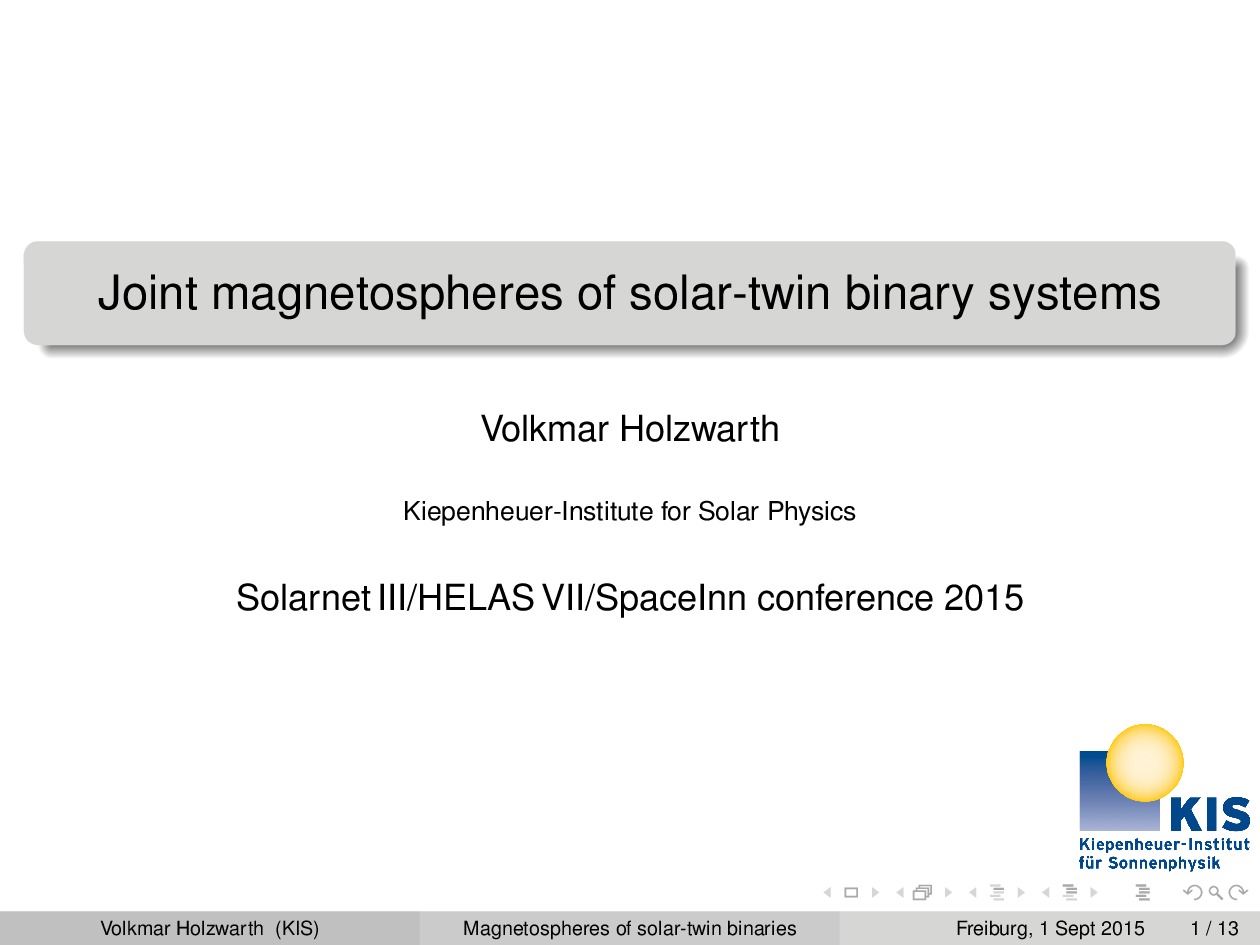Main category
Natural Sciences (Astrophysics and Astrononmy)
Abstract
Close binary stars with late spectral-type components, such as RS CVn- or BY Dra-systems, are among the magnetically most active stellar objects known. The magnetic flux generated in the outer convection zone of these rapidly rotating cool stars leads after emergence at the stellar surface to a plethora of activity signatures, which cover large time-, spatial-, and spectral-ranges. Direct observations of coronal magnetic fields are, however, hardly possible and even in the case of the Sun limited to snapshots of localised regions. Investigations focusing on the structure and evolution of large-scale magnetic fields thus frequently apply approximation techniques which are based on the extrapolation of observed magnetic field distributions on the stellar surface into upper atmospheric layers. Here, the potential field source surface approximation technique, which was originally developed for the case of the Sun and later applied to active single stars as well, has been extended to the case of binary systems to investigate their joint magnetospheres and, in particular, the properties of inter-connecting magnetic field structures. The extended modelling technique is described before its capabilities are demonstrated on the basis of a "solar-twin" system, for which synoptic magnetic maps of the Sun observed during different phases of its activity cycle are used. The connectivity of closed coronal loops, 'open' field regions, and inter-connecting field structures is determined for different combinations of solar synoptic maps (e.g. active-active, active-inactive) and compared with the joint magnetospheres of the system V4046Sgr.
Do you have problems viewing the pdf-file? Download presentation
here
If the presentation contains inappropriate content, please
report the presentation. You will be redirected to the landing page.
